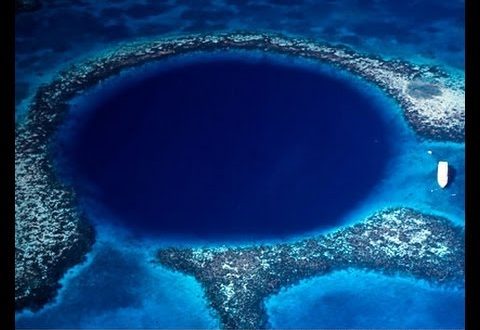The Mysterious Belize Great Blue Hole is a large underwater hole off the coast of Belize. It lies near the centre of Lighthouse Reef, a small atoll 100 kilometres from the mainland and Belize City.
The hole is perfectly circular in shape, over 300 meters (1000 ft) across (diameter), 3140 feet circumference and 125 meters (410 ft) deep. It was formed as a limestone cave system during the last glacial period when the sea level was 400 to 500 feet below present time and was dry land.
Believed to be the world’s largest feature of its kind, the Great Blue Hole is part of the larger Belize Barrier Reef Reserve System, a World Heritage site of the United Nations Educational, Scientific and Cultural Organization (UNESCO).
The hole itself is the opening to a system of caves and passageway that penetrate this undersea mountain. In various places, massive limestone stalactites hang down from what was once the ceiling of air-filled caves thousand of years before the end of the last Ice Age 15,000 years ago. When the ice melted the sea level rose, flooding the caves. This process occurred in stages.
Evidence for this are the shelves and ledges, carved into the limestone by the sea, which run the complete interior circumference of the Blue Hole at various depths. The Blue Hole was once a cave at the centre of an underground tunnel complex whose ceiling collapsed.










Join the Discussion
Type out your comment here:
You must be logged in to post a comment.